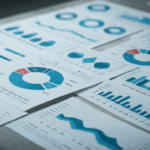Better Predictions = Higher Profits
 So the promise of using statistical algorithms, forecasting and predictive analytics is now added to the list of a company’s number one priorities. There is a sense of urgency surrounding this new high profile initiative. One may ask, “What’s next?” Well, here are a few steps that you will need to take to deploy your forecasts successfully.
So the promise of using statistical algorithms, forecasting and predictive analytics is now added to the list of a company’s number one priorities. There is a sense of urgency surrounding this new high profile initiative. One may ask, “What’s next?” Well, here are a few steps that you will need to take to deploy your forecasts successfully.
Better Predictions = Higher Profits
 So the promise of using statistical algorithms, forecasting and predictive analytics is now added to the list of a company’s number one priorities. There is a sense of urgency surrounding this new high profile initiative. One may ask, “What’s next?” Well, here are a few steps that you will need to take to deploy your forecasts successfully.
So the promise of using statistical algorithms, forecasting and predictive analytics is now added to the list of a company’s number one priorities. There is a sense of urgency surrounding this new high profile initiative. One may ask, “What’s next?” Well, here are a few steps that you will need to take to deploy your forecasts successfully.
1. Define the project: This is the most critical step in ensuring a successful outcome. In far too many cases, forecasts are done as a fishing expedition where analysts run the data through predictive algorithms to see what “pops.” These types of models are doomed to fail. Analysts, those producing the models, must be in close collaboration with the business. Defining the relationships between the two as supplier/customer with the analyst being the supplier and the business being the customer goes a long way to successfully defining the project.
2. Take a data asset inventory: Once the project is defined, it is critical that an inventory of all data assets be taken. Answering the questions that the business has may require gathering additional data, purchasing data from third parties, or reformatting existing data sources. Statistical modeling will help the company understand what data are most useful.
3. Use the right methodology: There is no one best algorithm or methodology. Often, analysts like to try different ways of looking at the data. Now, modern computing power allows analysts to run hundreds of models and to pick the winners. Care should be taken not to create complicated black-box voodoo models but to choose methodologies that support models that can be explained in a business context.
4. Data Preparation: Here lies a classic example of garbage in, garbage out. All data can be thrown into a model, but dirty data will guarantee that the results of the model will be inaccurate. Dirty data leads to significant variables being excluded from the model. Non-significant variables can be erroneously included in the model along with greater variability and less explanatory power.
Select, extract, and transform data upon which to create models. Although the data will never be perfect, for best results, make sure the data is as clean as possible before undertaking a modeling effort.
5. Exploration of the data: Once you have the data as close to accurate as possible, make sure there are a sufficient number of records, history, and fields to ensure that patterns and relationships can be found and data is easily updatable. Most importantly, make sure that the data being used in the models has significant business value.
6. Model Building: Here’s the fun part. Building analytic models is both art and science. The analyst runs one or more algorithms against a data set and tries to find predictors for the dependent variable. Next, the data set is split so that the analyst can “train” the model to predict a known set of results. Finally, the models are created, tested, validated, and then evaluated to ensure that they will meet the project metrics and goals.
7. Train Users on appropriate uses: This may be one of the most overlooked steps of all. Models are useless, unless users know how to use them correctly. It is necessary for users to understand that all forecasts have errors and, in many cases, the models can be useful even when they are not 100% accurate. Evaluate the forecasting power against the risk level of the decisions that are being made.
8. Deploy the model: So, the model is written; and users have been trained. Now comes the hard part. Even the best forecasting models can fail if the business users ignore the results, or if the forecast fails to produce a positive outcome for the business. More importantly, it is not the model results that determine business values. It is rather the human decision of what action to take based on the data and how to apply it that results in positive outcomes for the company.
9. Managing the model: As time goes on, an on-going maintenance program to manage models and improve their performance should be formulized. The only way to improve forecasting is to track results. Model management helps to improve performance, control access to the models, and promote reuse. This helps minimize overhead costs associated with the rebuilding of the models when they age.
Better data and better predictions equal higher profits. That’s the promise of implementing forecasting correctly and actionably. Keeping these steps in mind will help ensure that your modeling efforts will be a success.





